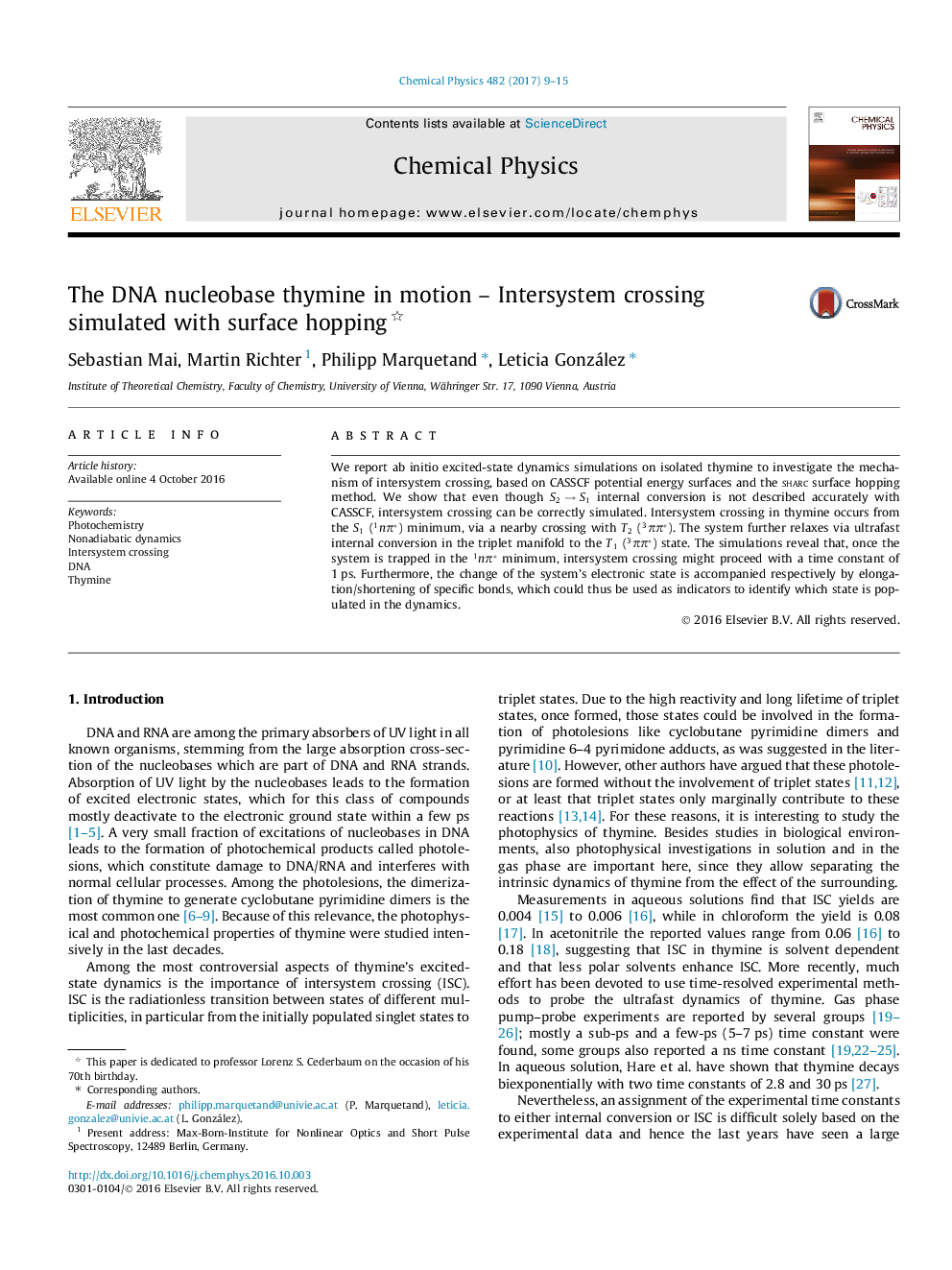| Article ID | Journal | Published Year | Pages | File Type |
|---|---|---|---|---|
| 5372772 | Chemical Physics | 2017 | 7 Pages |
â¢Intersystem crossing in gas phase thymine is found to be an efficient process.â¢The mechanism involves a crossing of the 1nÏâ and 3ÏÏâ electronic states.â¢The change in electronic state might be observable via specific vibrational modes.
We report ab initio excited-state dynamics simulations on isolated thymine to investigate the mechanism of intersystem crossing, based on CASSCF potential energy surfaces and the Sharc surface hopping method. We show that even though S2âS1 internal conversion is not described accurately with CASSCF, intersystem crossing can be correctly simulated. Intersystem crossing in thymine occurs from the S1 (1nÏâ) minimum, via a nearby crossing with T2 (3ÏÏâ). The system further relaxes via ultrafast internal conversion in the triplet manifold to the T1 (3ÏÏâ) state. The simulations reveal that, once the system is trapped in the 1nÏâ minimum, intersystem crossing might proceed with a time constant of 1Â ps. Furthermore, the change of the system's electronic state is accompanied respectively by elongation/shortening of specific bonds, which could thus be used as indicators to identify which state is populated in the dynamics.
